

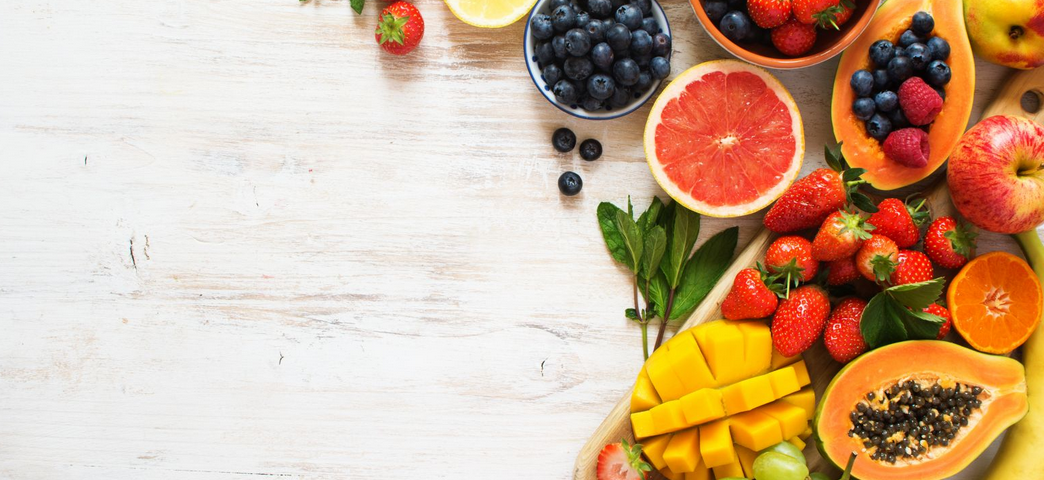
Acknowledgements: I would like to thank my friend at IS Global BCN for sending me the most up -to-date peer-reviewed credible reports, studies and articles for me to review and share. As well as others sending me over articles and studies to read and review for validation prior to dissemination. This really helps minimize the spread of mis- information.
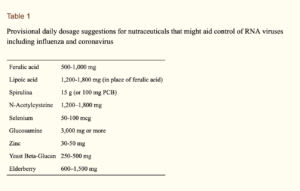
McCarthy & DiNicolantonin, 2020
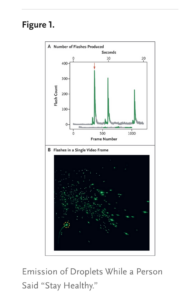
(Anfinrud et al., 2020)
Ok, that’s great, let us talk about you!
Firstly, I will break it down showing some of the prominent answers and then I will discuss and summarize the results with some suggestions.
From a sample size of 67 people, mostly women from an expat community Catalonia Spain. This lock down has effected almost everyone in some way (98%), the majority present with 1- 2 children (76%), 31% have a dog (or mechanism to exit the house), 79% are locked down with family members, 70% would feel better if they were aware of the length of the lock down and 25% feel the same regardless of length. 43% find that isolation makes them anxious- but 40% don’t care either way and 16% don’t have any anxiety about it. 78% believe this isolation can have negative side effects. Over half have faith that the governments are doing what they can in this situation (70%). Close to 95% are uncertain about what will happen after this. Close to half (47%) do not (or have not been) exercise the same amount during the confinement. 72% believe this will or already has had financial implications on their life. There were mixed feelings of helplessness of the situation, which really demonstrates the resilience of people in crisis. Over 60% of the sample feel this will have an effect on their children (this was not specified as negative or positive). Close to half (46%) are more easily irritated due to the confinement and over half are not relaxed and not able to do what they like.
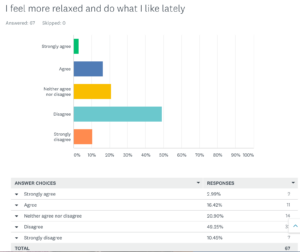
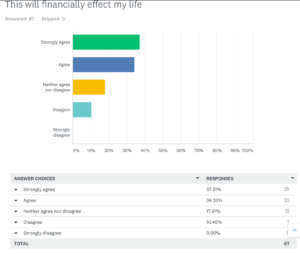
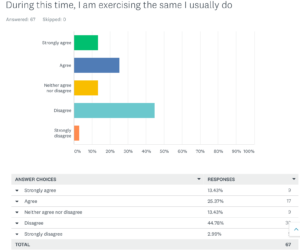
This survey, while not rigorous or without bias shows some major trends.
So, what do we do?
This has the potential to prevent dependencies and manage uncertainty. Do the things that make you happy right now, focus on the present moments and embrace this pattern- as it won’t last forever. Take advantage of the many online (and in our own community) meditation and self-centering tools. Things won’t be the same after, examine your feelings about this and express it with someone you love and trust.
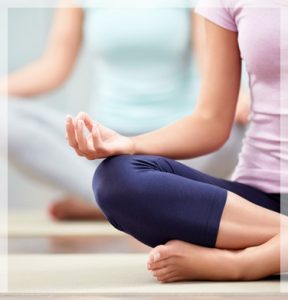
If you haven’t already, be sure to create a good routine that includes healthy eating, exercise (at least once a day for 30-60mins) – all age populations should do weight resistance exercises
, especially women and those over 50 as bone density naturally drops. There are numerous videos and activities online (from some of our amazing community), find the ones that speak to you and work with your schedule and embrace it.
Use personalized anxiety remedies, whether that is yoga, deep breathing, time alone (if possible), long bath, or personal hobbies. Another strategy that might be useful is to reflect on your situation, validate that this is difficult and do not push your feelings away- more recognize and validate your feelings and attempt to prevent ‘physical reactions’ from ‘feelings’. This removes the physical reaction from effecting your body and creating physiological responses to the feelings. Every feeling we allow to penetrate into a physical reaction, causes a release of chemicals in the brain. The stressful or anxiety-based feelings can initiate the fight or flight response which has detrimental effects on your health.
It is vital to get the kids outside and to see the sun for obvious reasons, but if you are finding they are having a lot of screen time, you might want to consider (high) blue light blocking glasses. Here is some evidence:
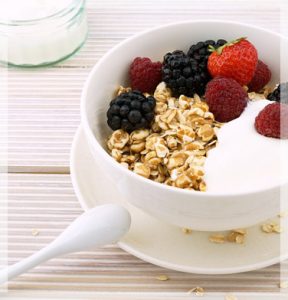
For recipes and facts follow me: @vitality_healthsolutions
Thanks for reading and stay healthy!
Warmest Wishes,
REMINDER: It is shown in metanalysis (the most credible type of research) shows that communal accountability, social support and dietary support has the ability to increase adherence to a diet or wellness program.
Lemstra, M., Bird, Y., Nwankwo, C., Rogers, M., & Moraros, J. (2016). Weight loss intervention adherence and factors promoting adherence: a meta-analysis. Patient preference and adherence, 10, 1547.
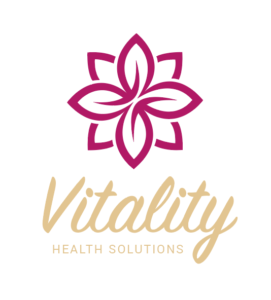
Copyright ©2020 VitalityHealthSolutions, All rights reserved.
Anfinrud, P., Stadnytskyi, V., Bax, C. E., & Bax, A. (2020). Visualizing Speech-Generated Oral Fluid Droplets with Laser Light Scattering. New England Journal of Medicine.
Burkhart K & Phelps JR. (2009). Amber lenses to block blue light and improve sleep: a randomized trial. Chronobiology Int, 26: 1602–1612
Cascella, M., Rajnik, M., Cuomo, A., Dulebohn, S. C., & Di Napoli, R. (2020). Features, evaluation and treatment coronavirus (COVID-19). In StatPearls [Internet]. StatPearls Publishing.
Chen, J., Lau, Y. F., Lamirande, E. W., Paddock, C. D., Bartlett, J. H., Zaki, S. R., & Subbarao, K. (2010). Cellular immune responses to severe acute respiratory syndrome coronavirus (SARS-CoV) infection in senescent BALB/c mice: CD4+ T cells are important in control of SARS-CoV infection. Journal of virology, 84(3), 1289-1301.
Esaki, Y., Kitajima, T., Ito, Y., Koike, S., Nakao, Y., Tsuchiya, A., … & Iwata, N. (2016). Wearing blue light-blocking glasses in the evening advances circadian rhythms in the patients with delayed sleep phase disorder: An open-label trial. Chronobiology international, 33(8), 1037-1044.
Fargason, R. E., Preston, T., Hammond, E., May, R., & Gamble, K. L. (2013). Treatment of attention deficit hyperactivity disorder insomnia with blue wavelength light-blocking glasses. bipolar disorder, 24, 25.
He, X., Lau, E. H., Wu, P., Deng, X., Wang, J., Hao, X., … & Mo, X. (2020). Temporal dynamics in viral shedding and transmissibility of COVID-19. Nature Medicine, 1-4.
Henrik Salje, Cécile Tran Kiem, Noémie Lefrancq, Noémie Courtejoie, Paolo Bosetti, et al.. Estimating the burden of SARS-CoV-2 in France. 2020.
Hillaker, E., Belfer, J. J., Bondici, A., Murad, H., & Dumkow, L. E. (2020). Delayed Initiation of Remdesivir in a COVID‐19 Positive Patient. Pharmacotherapy: The Journal of Human Pharmacology and Drug Therapy.
Hunt, M., & Koziatek, C. (2020). A Case of COVID-19 Pneumonia in a Young Male with Full Body Rash as a Presenting Symptom. Clinical Practice and Cases in Emergency Medicine.
Jimenez-Cauhe, J., Ortega-Quijano, D., Prieto-Barrios, M., Moreno-Arrones, O. M., & Fernandez-Nieto, D. (2020). Reply to “COVID-19 can present with a rash and be mistaken for Dengue”: Petechial rash in a patient with COVID-19 infection. Journal of the American Academy of Dermatology.
Kong, W. H., Li, Y., Peng, M. W., Kong, D. G., Yang, X. B., Wang, L., & Liu, M. Q. (2020). SARS-CoV-2 detection in patients with influenza-like illness. Nature Microbiology, 1-4.
McCarty, M. F., & DiNicolantonio, J. J. (2020). Nutraceuticals have potential for boosting the type 1 interferon response to RNA viruses including influenza and coronavirus. Progress in Cardiovascular Diseases.
Lin, J. B., Gerratt, B. W., Bassi, C. J., & Apte, R. S. (2017). Short-wavelength light-blocking eyeglasses attenuate symptoms of eye fatigue. Investigative ophthalmology & visual science, 58(1), 442-447.
Prasad, A. S., Beck, F. W., Bao, B., Fitzgerald, J. T., Snell, D. C., Steinberg, J. D., & Cardozo, L. J. (2007). Zinc supplementation decreases incidence of infections in the elderly: effect of zinc on generation of cytokines and oxidative stress. The American journal of clinical nutrition, 85(3), 837-844.
Principi, N., & Esposito, S. (2020). Chloroquine or hydroxychloroquine for prophylaxis of COVID-19. The Lancet Infectious Diseases.
Sominsky, L., Walker, D. W., & Spencer, S. J. (2020). One size does not fit all–Patterns of vulnerability and resilience in the COVID-19 pandemic and why heterogeneity of disease matters. Brain, Behavior, and Immunity.
Qiu, J., Shen, B., Zhao, M., Wang, Z., Xie, B., & Xu, Y. (2020). A nationwide survey of psychological distress among Chinese people in the COVID-19 epidemic: implications and policy recommendations. General psychiatry, 33(2).
Tang, N., Li, D., Wang, X., & Sun, Z. (2020). Abnormal coagulation parameters are associated with poor prognosis in patients with novel coronavirus pneumonia. Journal of Thrombosis and Haemostasis.
To, E. E., Vlahos, R., Luong, R., Halls, M. L., Reading, P. C., King, P. T., … & Starkey, M. R. (2017). Endosomal NOX2 oxidase exacerbates virus pathogenicity and is a target for antiviral therapy. Nature communications, 8(1), 1-17.